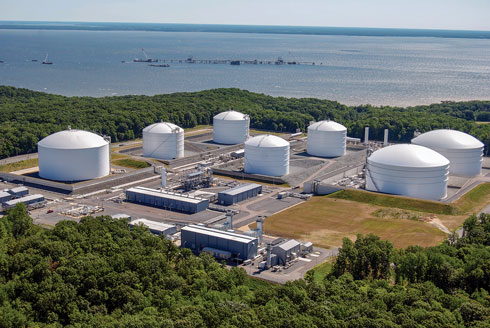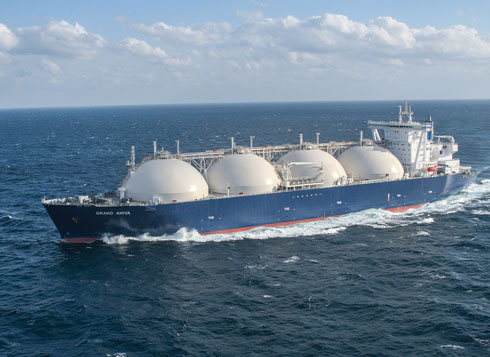Industry Trends: Russia and US go head-to-head over EU gas market
E. Gerden, Contributing Writer
Lower-cost Russian gas will likely continue to dominate the EU market in the coming years, despite the growth in oil prices, to which Russian gas prices are linked. However, demand for gas in Europe will continue to increase, reaching an estimated 145 Bm3y in 2025 and 185 Bm3y in 2035, which could provide good opportunities for US LNG to find its niche.
Gazprom officials believe that the cost of US LNG would need to be reduced by four times its current price, to approximately $1/MMBtu or lower, to be competitive with Russian gas in Europe.
Meanwhile, a US bill passed in August 2017 introduced new economic sanctions against Russia and opposed the implementation of Russia’s Nord Stream 2 gas pipeline project. Nord Stream 2 would pipe gas more than 1,200 km from Russia to Germany via the Baltic Sea. The US considers the project to be detrimental to the energy security of the EU, as well as to the Central and Eastern European gas markets.
Market opportunities for US LNG. During 2018, US LNG producers began to shift their export focus to Europe from Asia. The reason for the shift is twofold: US producers are interested in the European gas market, and they are also eager to counteract Europe’s gas supply dependence on Russia.
Leading Russian gas producers believe that non-contracted US LNG will go to Europe under two conditions: economic sense and the absence of more favorable alternatives. According to producer assessments, the first condition is likely to be met at a price of $3/MMBtu at Henry Hub. Trader costs for the supply of additional gas to Europe, including the cost of transportation and regasification, are approximately $5/MMBtu. Since gas prices in Europe are above $8/MMBtu, the supply of US LNG to Europe could prove profitable.
However, sending LNG to the Asia-Pacific region could prove even more lucrative for US producers. At present, Asian buyers are offering high spot prices for LNG. Also, gas prices in Asia are considerably higher than those in Europe, at more than $10/MMBtu ($350/1,000 m3), mainly due to growing gas demand from China. At present, China consumes approximately 200 Bm3y of LNG. This volume is expected to expand over the following years, helped by China’s ongoing efforts to reduce the use of coal in its total energy balance.
Another option for US LNG producers could involve sending LNG supplies to Europe on a one-off basis. Opportunities for these supplies would likely take place during summer, when gas spot prices in Europe and Asian markets—and the difference between spot prices in the two markets—usually decline.
Some EU countries remain skeptical about the prospects of US LNG in the European market. Poland, for example, demanded a price cut after making two test deliveries of LNG from the US. Although most US LNG export projects are still in the planning or construction stages and will not begin exporting LNG supplies before 2020, the startup of several new projects early in the next decade could be a game-changer for US LNG producers and European gas importers.
 |
|
FIG. 1. Dominion Energy’s Cove Point LNG export terminal in Maryland. |
The Cove Point terminal in Maryland (Fig. 1) became fully operational in March of this year, while production at the Elba Island facility in Georgia will start in 2019. Also, the first stage of the Freeport LNG facility in Texas will be officially commissioned in 2019. Six more projects are at the construction stage. By 2020, US production capacity for LNG is anticipated to increase to 78 metric MMtpy.
Russia’s dominance in EU gas demand. The EU market is still dominated by Russia’s pipeline gas supply. In 2017, Russia’s exports to the EU market reached a new high of 193.9 Bm3, which is 14.6 Bm3 (8.1%) higher than the previous record reached in 2016. Such growth allowed Gazprom to increase its net proceeds from gas sales to non-CIS countries to RUB 2.14 T.
At present, imports of pipeline gas from Russia to the EU remain more economically feasible than exports of US LNG to the EU. However, this situation could change as stricter pricing policies are established in the EU. Such a move could result in steep discounts by Gazprom for its European buyers. These discounts would not necessarily hurt Russian LNG producers, however, since gas liquefaction costs in Russia are among the lowest in the world.
 |
|
FIG. 2. LNG exports from Russia’s Yamal LNG export terminal en route to Europe. |
In late 2017, Russia began exporting LNG (Fig. 2) from its Yamal terminal in Sabetta, at the northeast corner of the Russian Yamal Peninsula. Production costs at Yamal are significantly lower than those at major US and Australian LNG plants. The lower costs are attributed to low liquefaction costs, the absence of a 30% export duty and producers’ exemption from Russia’s mineral extraction tax.
The cost of LNG exported from the Yamal terminal to Europe is approximately $174/1,000 m3, which is significantly lower than US export costs. Export and production costs from Gazprom’s Baltic LNG terminal in the St. Petersburg region will also be favorable. The start of direct exports from St. Petersburg, one of the largest European seaports, will further reduce the cost of LNG transportation compared to
the US.
Struggle for gas dominance. Russian suppliers must become more flexible to preserve their European gas market share. Gazprom has already changed its pricing model. Previously, Gazprom sold gas under long-term contracts linked to oil prices; however, in recent years, the company has significantly increased its number of one-time auctions.
In the near future, planned regasification terminals in Greece and Croatia, together with those already operating in Poland and Lithuania, may put an end to Gazprom’s dominance in the Baltics and Southern Europe gas markets.
Additionally, a predicted further rise in oil prices will directly affect the competitiveness of Gazprom’s gas exports in comparison with US LNG.
The only market in which both Russian gas and US LNG will remain in demand is China, although the country’s gas import market is still evolving. China’s rapid demand continues to push up spot prices for LNG.
In the meantime, global oil and gas majors foresee bright prospects for LNG. In its “LNG outlook 2018” report, Shell noted that, by 2030, global demand for LNG will have grown twice as quickly as demand for pipeline gas. According to Shell analysts, the global LNG market will expand by 1.8 times during the next 12 yr, reaching 460 metric MMt. The same outlook is held by BP, which predicts that LNG’s share in world gas trade will increase to 51% by 2035.
Analysts from Gazprom and Novatek, meanwhile, predict that prices between Asian and European gas hubs will begin to level off with the growth of LNG shipments from the US and other countries, including Australia. This could signal an end to the mega-profits enjoyed by Gazprom and other gas monopolies in recent years. GP
Eugene Gerden is an international contributing writer specializing in the global oil refining and
gas industry. He has been published in a number of prominent industry publications.




Comments